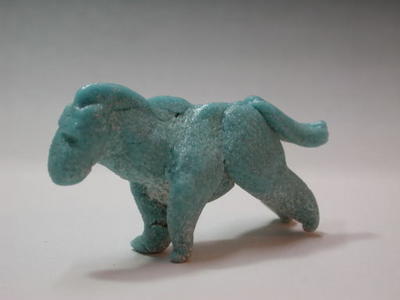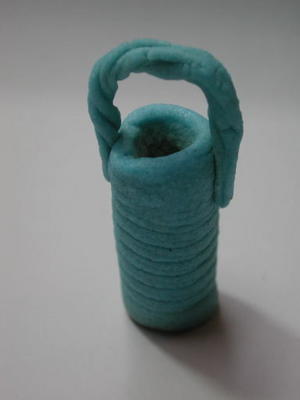The Tried-and-true Recipe
There are dozens of Egyptian paste recipes and where to start is not always apparent. Add to this the fact that you can buy premixed; however manufactures can change formulation without informing you and it’s rather dear. This recipe from an old ceramics monthly (Behrens) was chosen for a number of reasons. First is mixed by measures, so there’s no need for gram scale. Secondly, there is no clay in this formula; it’s mostly quartz, which is close to the composition of the archaeological finds. Third, there are very few ingredients and it’s inexpensive. And lastly, it can be modified easily. For those unfamiliar with studio, hygiene I am mentioning this: it is IMPERATIVE TO WEAR RESPIRATOR when measuring and mixing anything that contains free silica. The recipe is as follows:
16 parts, silica (325 to 400 mesh)
4 parts, bentonite .
2 parts, baking soda
this is the basic mix to this add one half part copper carbonate for turquoise color. I’ve tried a few other recipes but this one is tried-and-true; it is adequate for the time being.

Labels: Egyptian paste recipe, faience clay, paste mix




